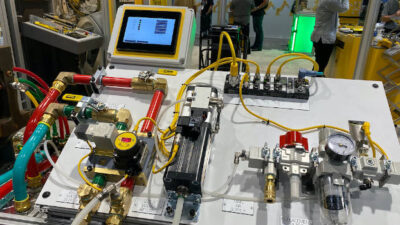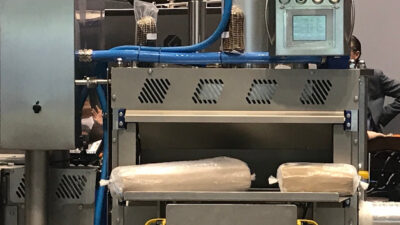Microprocessor-based embedded control systems traditionally have used proprietary real-time operating systems (RTOSs) to attain real-time or near-real-time response needed in such applications as automotive engine control systems. Proprietary RTOS, however, involve some particularly thorny issues. One major issue is simply the engineering cost to develop an RTOS.
Microprocessor-based embedded control systems traditionally have used proprietary real-time operating systems (RTOSs) to attain real-time or near-real-time response needed in such applications as automotive engine control systems. Proprietary RTOS, however, involve some particularly thorny issues. One major issue is simply the engineering cost to develop an RTOS. Proprietary RTOS development is up to the system designer, who usually has more pressing issues to deal with-for example, focusing on developing the algorithms for a particular application-than engineering background software. Even with a previously developed RTOS, there are maintenance issues.
To take advantage of new, better performing hardware, the system engineer has to make more or less major revisions to the RTOS. Chip-makers have no motivation whatsoever to help system engineers update a proprietary RTOS to run on their new hardware, so the task falls on the system engineer. System designers can avoid these issues by designing their applications around a widely disseminated commercial operating system. Two such OSs are Microsoft Windows and Linux.
According to Brian Handley of Macraigor Systems, embedded system designers are voting with their feet overwhelmingly for Linux. Macraigor provides a suite of hardware and software debugging tools used for all aspects of embedded development from hardware debug through manufacturing and test, so sees various embedded-system OS trends. OSs designed for office- and Internet-related applications are the opposite of deterministic by responding to interrupts when they get to them. Linux source code, freely available for use, re-use, and modification by anyone with the wherewithal and desire to do so, has had a cadre of users interested in real-time OS applications. [Microsoft also offers Windows CE and Windows Embedded that can serve various applications.] MontaVista Software has optimized Linux for various environments, including real time. “What real time means,” says Paxton Cooper, MontaVista’s director of product marketing, “depends on your application.”
The key is to know how fast your embedded system needs to react. For an office program a bit of latency isn’t a problem. A few hundred milliseconds latency in an antilock braking system (ABS) controller, on the other hand, would likely lead to disaster. MontaVista’s 4.0 version Real-Time Linux, with latency in the tens of microseconds range, provides sufficient “real-time” performance for nearly half of embedded applications, including nearly all mobile phone and industrial applications, and most telecom applications. Further improvement is needed for automotive control applications, such as engine control modules and, especially, safety systems (ABS, air-bag triggers, etc.) As processor speeds increase and more responsive versions of the open-source OS become available, the need for “roll your own” RTOSs for embedded systems is going away except at the high-performance end.
www.macraigor.com , www.linux.org
www.microsoft.com/embedded



